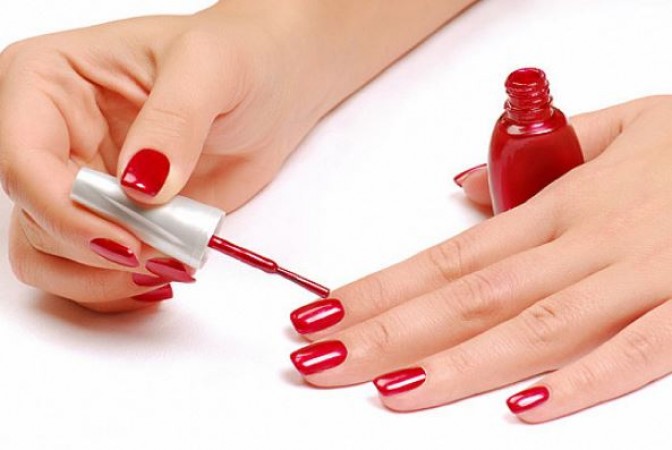
Many women enjoy showcasing beautiful hands, often resorting to methods like waxing and manicures. A popular and common practice to enhance the beauty of hands is applying nail polish. While girls often experiment with various nail polish colors, creating nail art designs to further enhance the aesthetic appeal of their hands, it's crucial to be aware that these seemingly harmless beauty products may contain hazardous chemicals.
Chemical Composition of Nail Polish:
Nail polish often contains chemicals like formaldehyde, toluene, and dibutyl phthalate. Formaldehyde is a known irritant, toluene may affect the nervous system, and dibutyl phthalate is linked to hormonal disruptions. Understanding the composition helps users make informed choices about their beauty products.
Skin Allergies and Reactions:
Prolonged exposure to the chemicals in nail polish can lead to skin allergies, irritation, swelling, and redness. Some individuals may develop sensitivities over time, making it important to monitor for any adverse reactions and seek alternatives if needed.
Nail Polish Removers and Skin Issues:
Nail polish removers often contain harsh chemicals that can strip the skin of its natural oils, leading to dryness and potential infections. Using gentler alternatives or moisturizing the skin after removal can help mitigate these issues.
Respiratory Concerns:
The inhalation of chemicals like triphenyl phosphate, present in some nail polishes, can cause respiratory issues. Wearing masks during application or removal is recommended to minimize the risk of inhaling harmful substances.
Impact on Pregnant Women:
Pregnant women should exercise caution due to the potential harm chemicals in nail polish may pose to the developing fetus. Choosing natural and pregnancy-safe nail polishes can help reduce risks and ensure the well-being of both the mother and the baby.
Brain Health and Headaches:
Certain chemicals in nail polish, when absorbed, can affect the brain, leading to headaches and discomfort. Choosing nail polishes with lower levels of these chemicals or opting for natural alternatives can contribute to better brain health.
Moderation in Nail Polish Usage:
Taking breaks from frequent nail polish application allows the nails and surrounding skin to recover. This moderation helps reduce the risk of long-term adverse effects associated with constant exposure to nail polish chemicals.
Choosing Safer Alternatives:
Opting for nail polishes made from natural ingredients or labeled as "5-free" or "7-free" (indicating the absence of certain harmful chemicals) can significantly reduce the health risks associated with traditional nail polishes.
Educating Consumers:
Increasing awareness about the potential dangers of certain nail polish ingredients empowers consumers to make informed choices. Education on the topic can lead to a shift in preferences towards safer beauty products.
Overall Well-Being:
Prioritizing overall well-being over temporary beauty trends involves considering the potential health impacts of beauty products. Balancing aesthetics with health-conscious choices contributes to a more sustainable and holistic approach to personal care.
In conclusion, while the allure of beautifully painted nails is hard to resist, it is crucial to be mindful of the potential health risks associated with nail polish. Opting for nail polishes made from natural ingredients and limiting their use, especially during pregnancy, can go a long way in preserving both the beauty of hands and overall well-being. Regular breaks from nail polish application and choosing safer alternatives can contribute to healthier and more radiant hands in the long run.
Health Ministry Reports 57 Deaths and 65 Injuries at Gaza's Al-Aqsa Hospital in 24 Hours